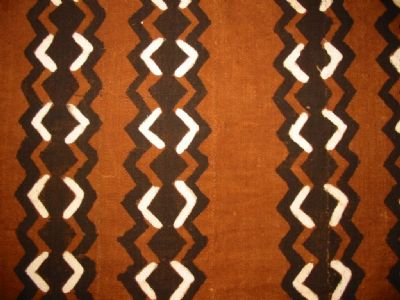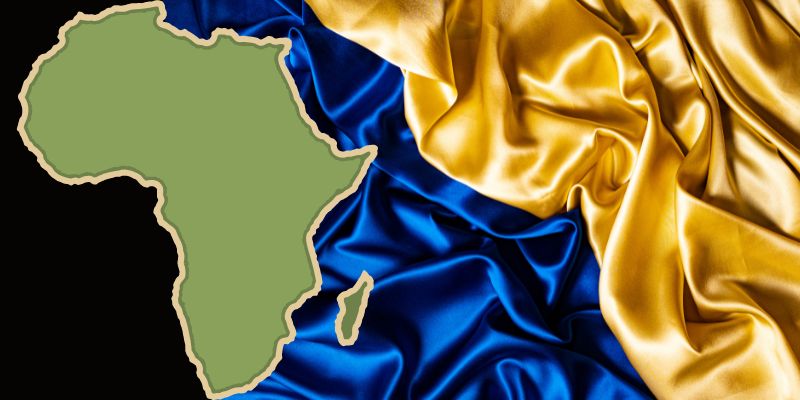Africa is a region that has a wealth of talented craftspeople. The numerous different types of African textiles produced now are a clear example of this inventiveness. These clothes have been around for a very long time and are still flexible, making them stand out. In particular, these materials can be applied to create any cloth while maintaining pure Afrocentrism.
How many types of African cloth are you familiar with? Hardly any?
After reading this essay, you’ll know more about the many types of African cloth so that it won’t matter as much anymore. Let’s first examine these fabrics to determine what they are.
What Are Fabrics From Africa?
These are unique textiles created by African people. They typically have distinctive designs, skills, and dyeing processes. Additionally, they serve various needs in terms of design and use.
African fabrics are also essential to African culture and tradition. They act as chronological “records” of African style in general. They are the primary forms of communication and identity used by Africans.
Five Types of African Cloth
African textiles come in a wide variety and mostly belong into one of the following types:
1. Aso-Oke
The Yoruba people of southwest Nigeria weave cloth known as Aso-Oke(pronounced ah-SHAW-okay). Aso-Oke is the English word for the top type of African cloth. It is a staple of Yoruba culture (the tribe of the southwest people in Nigeria, Africa). Aso-Oke is frequently treasured and handed down through the decades as a memento.
Men’s Agbada robes, women’s Iro wrappers, and men’s Fila caps are all made from Aso-Oke cloth. On exceptional events, including tribal ceremonies, celebrations, engagements and marriage rituals, birth naming rituals, burials, and other significant occurrences, Aso-Oke is customarily worn. When paired with aran, a brown velvet with circular patterns, Aso-Oke cloth is frequently seen.
2. Bogolan (Mud Cloth)
A hand-woven cotton type of African cloth from Mali called Bogolanfini, also known as Bamana mud fabric, is typically colored with matured mud. Women hand-paint this particular fabric with iron-rich mud before storing it in a container for almost a year before utilizing it.
Men weave the customary fabric for manufacturing Bogolanfini on a small stretch wheel. To start, they soak the material in a mixture of water that has been boiled with a sort of tree leaves that has been ground up (Cengura) to provide a general yellow hue.
The female painter then pours the mud onto the portions of the fabric that will be the space of the finished pattern with a wooden rod or an iron instrument. Lastly, she successfully uses a soda ash mixture to restore the untreated parts to their former white color.
Bamana women typically wore Bogolanfini during significant life transitions like marriage, childbirth, circumcision, and funeral. It served as a symbol of the hunters’ collective identification that the men wore. The fact that men’s hunting and women’s excision are associated with the Bogolanfini implies that it was once a very imposing clothing style.
It has a significant role in ancient Mali history and has evolved to represent the country’s national image. The fabric is shipped to many parts of the globe for usage in design, artwork, and décor.
3. Bazin
Among the most sought-after type of African cloth is Bazin. Bazin originated in Mali but is also popular in Burkina Faso and Senegal. It is particularly cherished in Mali to the stage where it has taken on an ethnic heritage of its own. The damask is produced in several European countries, including Germany, Holland, and others, but Mali is Africa’s top producer of Bazin.
The cotton used in the damask cloth has the unique property of having the color shine when soiled. Tunics, festive designs, and modern stylish are all made with grace in the classic cotton material of selection. With increasing stiffness, the price increases.
Each cloth made by hand for Bazin Africolor is distinctive since it is hand colored. Damask is frequently worn at actual events by Malians, including marriage rituals, birth naming rituals, and engagements.
4. Country Cloth
The Mende tribe of Sierra Leone and Liberia’s craftsmen produce the country cloth (Kondi-Gulei), a thick, dense textile. Historical methods for creating country cloth include using local produce cotton that has been hand-spun into yarn, hand-dyed, and hand-woven into pieces on a tripod wheel.
The country cloth was historically used to produce clothing. An aperture for the cap would be trimmed and stitched off a sheet of fabric that had been partially stitched together on the edges and had fine strands to accomplish the appropriate width. Embroidery is typical on the collar and pockets.
Additionally, blankets and bed covers made of country cloth were presented as presents, used as dowries, or used to wrap beds.
Akin to how blankets are manufactured and distributed as baby presents in the United States, it was frequently given to babies by grandparents and other family members. Country cloth is now used to create clothing and several other goods, including hats, bags, and other accessories.
5. kanga
In Eastern Africa, males occasionally don the vibrant traditional clothing known as the kanga (also spelled khanga or Leso). It is a piece of printed type of African cloth with a core area (Mji) that has a different pattern from the edges and text and frequently has a border around all four corners (called Pindo in Swahili) (Jina or Ujumbe).
The Mji and Jina are two characteristics that typically provide the kanga its identity, notoriety, and significance in the regional context. Kangas are generally rectangular, and each has its own “name” or motto printed in a range of patterns and hues in the Kiswahili language at the same place on every model.
Kangas are cultural objects of the Swahili people, and as such, they are carefully made appealing to their consumers. Kangas are typically used by ladies as a shawl or headgear and are marketed in identical sets called “Doti.” Only men are permitted to wear kangas within the home.
A frame and a design of black and white specks on a dark base were features of early kangas patterns. The lively, gregarious Guinea-Fowl with attractive black and white spotty hues is known as the “KANGA” by the consumers who first started naming these early drawings by that name.
It is significant to notice that kanga patterns have changed over time, progressing from primary black-and-white forms with dots to more intricate motifs with a range of themes and hues fashioned from various textiles.






















